E-VITS Ventilator Declared to Have Passed the BPFK Technical Feasibility Test
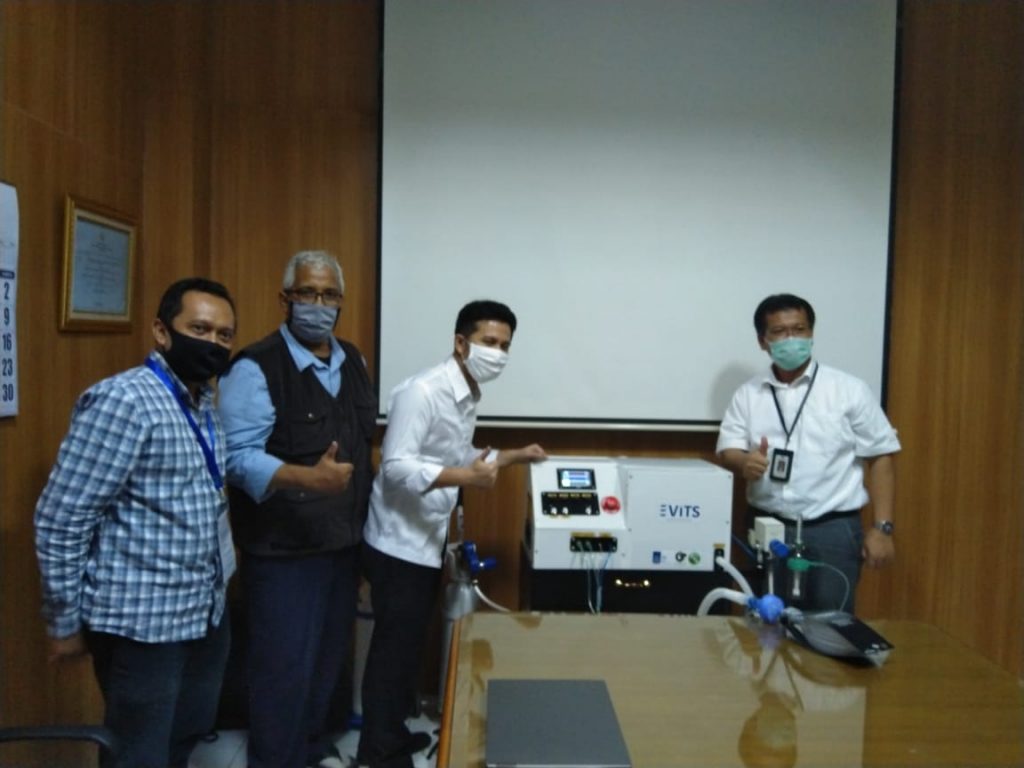
Handover of E-VITS to BPFK on May 5 done by the Director of the ITS Directorate of Research and Community Service (DRPM), Agus M. Hatta, S.T., M.Sc., Ph.D; Head of the ITS Ventilator Team, Dr. rer. nat. Ir. Aulia M. T. Nasution, M.Sc; Deputy Governor of East Java, Dr. Emil Dardak
Kampus ITS, ITS News – The Emergency Ventilator ITS (E-VITS), a prototype of Simple and Low-Cost Mechanical Ventilator developed by the Ventilator Team of the Department of Physics Engineering os the Sepuluh Nopember Institute of Technology, was declared to have passed technical tests conducted by the Health Facilities Safety Center (BPFK), on Thursday (21/5). This tool that has fulfilled a ventilator’s performance standards by BPFK, will then be prepared for clinical testing.
BPFK is an institution under the auspices of the Indonesian Ministry of Health with the task of carrying out maintenance and calibration on medical equipment used by health service facilities in Indonesia. This effort is to guarantee an accurate and precise performance (highly accurate and precise measurements) of medical equipment. To carry out their duties, BPFK is equipped with various measuring instruments with qualifications as calibrators of various physical parameters to ensure the accuracy of the performance of the medical equipment tested.
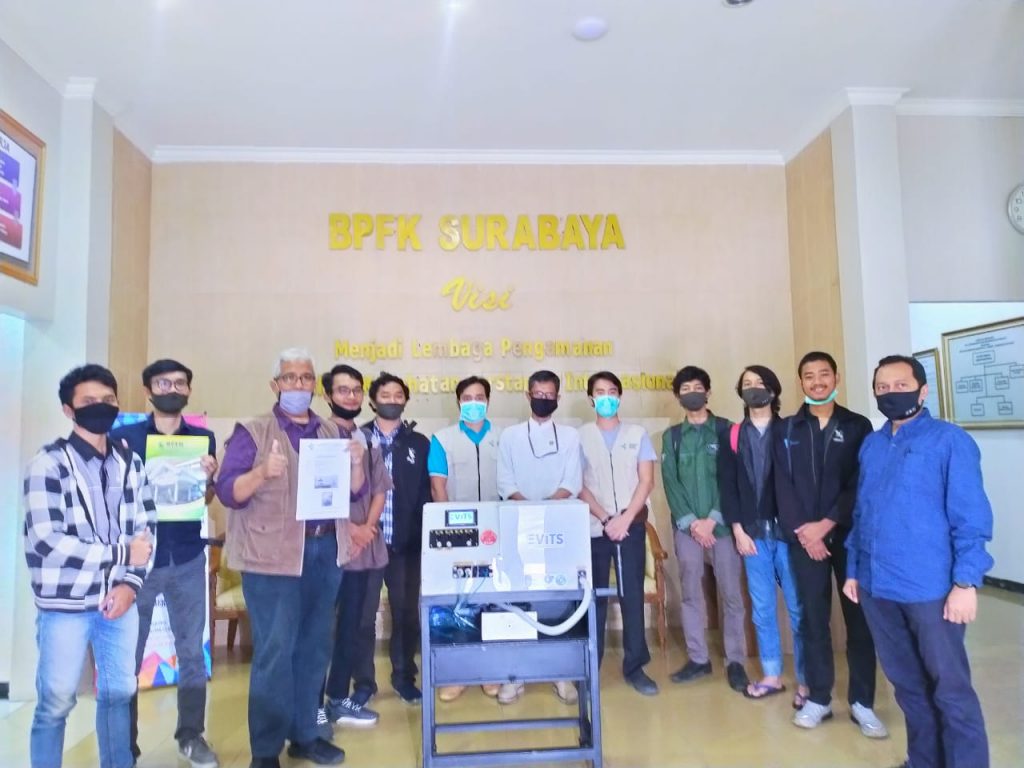
The Ventilator Team of the ITS Physics Engineering Department together with the Testing Team from BPFK Surabaya
In this Covid-19 pandemic situation, BPFK was given the additional task of conducting technical feasibility testing of various types of medical equipment prototypes that were developed to assist the management of patients infected with Covid-19. This includes testing the function and usage of a ventilator prototype, a medical device used as a breathing aid for Covid-19 patients.
Therefore, since May 5, tests on E-VITS have been processed to ensure that the ventilator system developed by ITS meets the performance parameters required by BPFK. On this occasion, Deputy Governor of East Java, Dr. Emil Dardak, also joined in the handover of E-VITS by the Ventilator Team of the ITS Physics Engineering Department in the context of submitting the prototype to BPFK for feasibility and technical safety test.
Development of the E-VITS Prototype
Head of the Ventilator Team of the Department of Physics Engineering, Dr. rer. nat. Ir. Aulia Muhammad Taufiq Nasution, M.Sc., conveyed that the E-VITS ventilator prototype submitted for testing has previously undergone development from the initial version that was launched on 7 April. “The initial version refers to proof-of-concept, which is proof of the prototype’s ability to demonstrate in fulfilling all aspects of performance parameters needed in clinical applications for Covid-19 patients,” he elaborated.
This lecturer who is familiarly called Olly, explained that after the initial version, the development of the ventilator prototype was also carried out with more emphasis on improving the operational resilience of the system. “Some improvements were made in order to achieve the stability and accuracy of the performance given by the E-VITS ventilator,” added this ITS Physics Engineering Department lecturer.
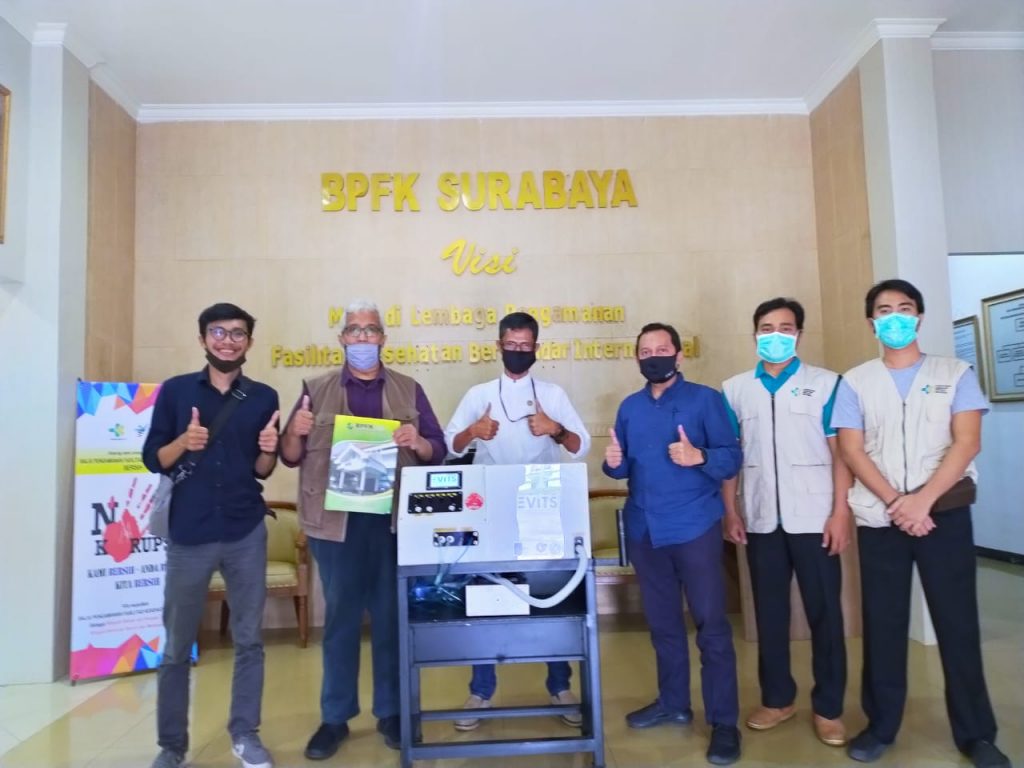
ITS Ventilator Team (from left to right): Iwan Cony S., S.T., M.T., and Dr. rer. nat. Ir. Aulia M. T. Nasution, M.Sc., with the company of BPFK representatives, Tri Dedi Setyawan, as well as the Director of ITS DRPM, Agus M. Hatta, S.T., M.SI., Ph.D
Olly and the team worked hard to make improvements so that the E-VITS will be able to perform in accordance to the five requirements of BPFK, namely electrical safety testing; visual test; endurance test; performance test; and the availability of documentation related to the technical, operational, and maintenance of the ventilator. “For this reason, before being submitted to BPFK, we have also carried out an internal inspection to make sure that the E-VITS have fulfilled every point in the relevant requirements,” he revealed.
One important point out of those five requirements is the tenacity of the tool. In this case, the ventilator has been tested using a tool for 2×24 hours without stopping to monitor whether the ventilator system is able to produce a stable performance in accordance with standard provisions. “The system is declared as stable if it remains to be accurate and precise in terms of performance,” explained this bespectacled lecturer.
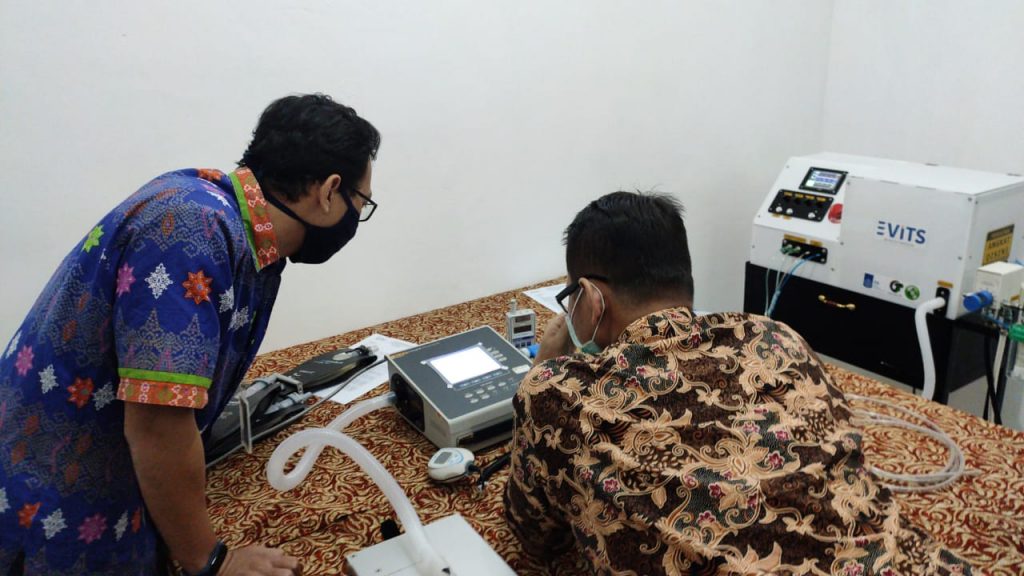
First day of the E-VITS testing process
As a reference, variations in the value (variability) of accuracy and precision during tool testing for 2×24 hours must be no more than a range of 5 percent. If more than this value, the device tested is no longer being controlled. “For that reason, E-VITS is equipped with controllers on all sensors (which have been calibrated) and actuators, so as to produce the expected variability,” explained this doctor who is a graduate of the University of Göttingen.
The BPFK test results indicate that the E-VITS ventilator has satisfactory performance with all aspects of performance and safety being met. He continued that BPFK provides a record of minor improvements to prepare E-VITS in the clinical testing phase related to the dimensions and improvement of labeling quality for various indicators on the E-VITS casing. “We have consulted with BPFK that the display of E-VITS will be designed slimmer than it is now,” he concluded. (tri/ory/ITS Public Relations)
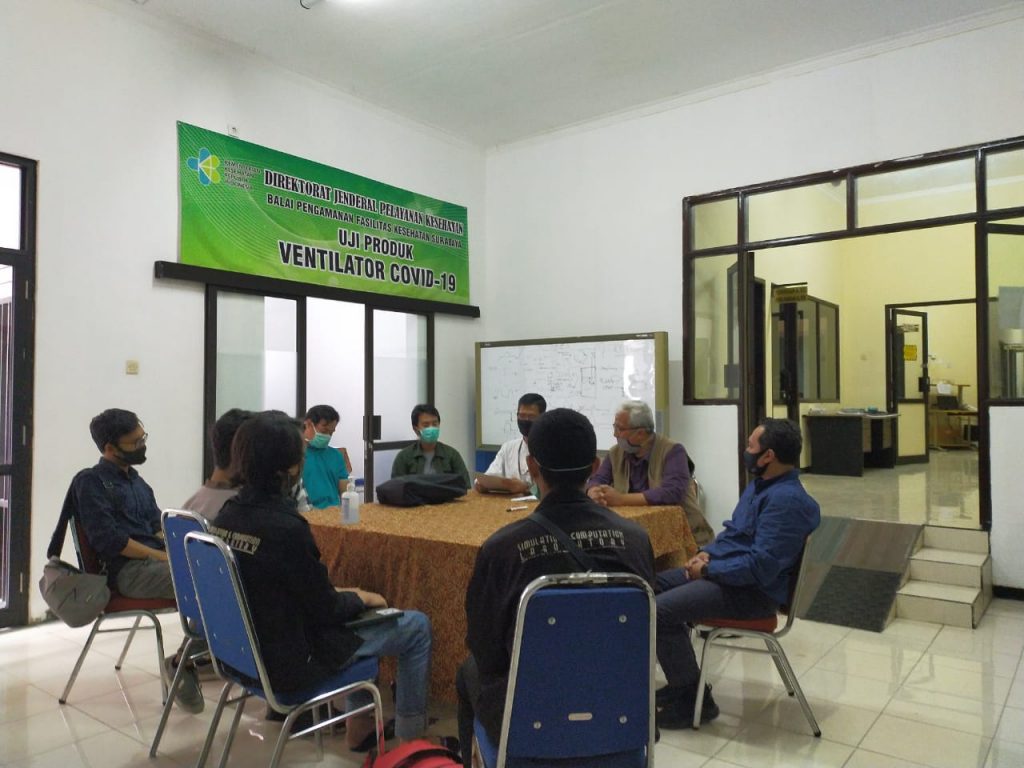
Submission of the E-VITS technical test results at BPFK Surabaya
Related News
-
Supporting the Development of Material Processes, ITS Professors Utilize Biomass Waste
ITS Campus, ITS News — Innovation in material processes continues to develop to support society’s need for environmentally friendly
May 25, 2020 07:05 -
ITS Professor Ideas for Bio-Corrosion Control in Marine Structures
ITS Campus, ITS News — Coastal and offshore buildings interacting directly with seawater trigger damage, including bio-corrosion. If not
May 25, 2020 07:05 -
ITS Launches the First Marine Floating Solar Power Plant Prototype in Indonesia
ITS Campus, ITS News — Institut Teknologi Sepuluh Nopember (ITS)‘s commitment in realizing the energy transition is getting serious.
May 25, 2020 07:05 -
Targeting Champion, Bayucaraka ITS Launches Flying Robot Innovation
ITS Campus, ITS News – The Bayucaraka team at Institut Teknologi Sepuluh Nopember (ITS) has launched four new flying
May 25, 2020 07:05
